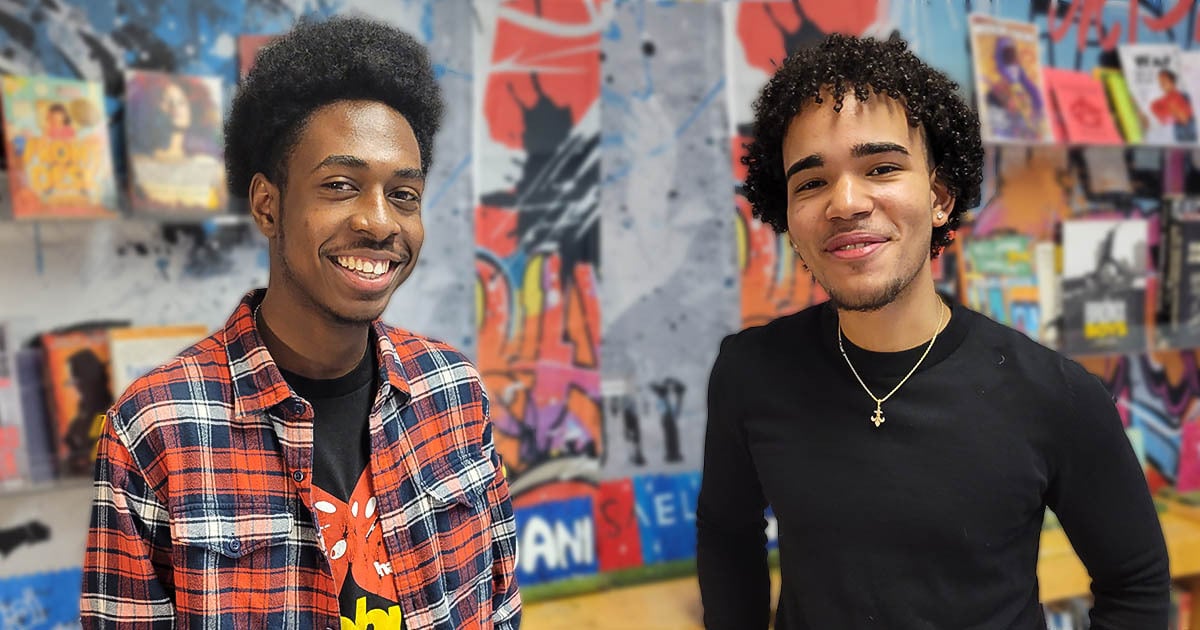
Apr 20, 2023 1:34:06 PM
Yancey Sanes grew up in the Bronx, and he’s now teaching the borough’s history of environmental activism to GenZ students at the very school he attended, Fannie Lou Hamer Freedom High School. The school faces Sheridan Boulevard, a multi-lane highway.
Sanes’ interdisciplinary, co-taught course on environmental racism covers some infuriating New York City history. In the middle of the 20th century, the Cross-Bronx Expressway was the first large highway built through a city in the United States. Tens of thousands of people were directly displaced. Property values plummeted and white flight set in. Traffic, noise, and air pollution began to burden the remaining residents, mostly Black and Puerto Rican.
Today the South Bronx is ringed by highways. Heavy truck traffic comes to the Hunts Point produce market and to the numerous waste transfer stations that accept a high proportion of the entire city’s garbage.
The air pollution has turned the area into “Asthma Alley,” with high rates of respiratory illness that are also thought to have contributed to high deaths from COVID in the neighborhood.
Plus, as sea levels rise, the South Bronx and much of New York City are disproportionately threatened by coastal erosion and flooding.
Sanes’ students learn about all these problems, but they don’t just memorize the bad news. They get involved with local organizations that care for the neighborhood’s water and green space, and they lobby for climate action.
Recently, they were featured in a video by their congressional representative, Alexandria Ocasio-Cortez, advocating for a proposal to cap a stretch of highway to reduce air pollution and traffic noise and increase green space.
“If we’re going to teach oppression we have to teach resistance,” Sanes said. “Not only problems, but let’s celebrate and talk about all the good things the Bronx has. You can stay in your community and make it better. Let’s think of things to make a change.”
Environmental racism–the practices and policies that cause racially marginalized groups of people to bear disproportionate harms from the degradation of the natural world–is as old as colonialism and industrialization.
Environmental racism is also deeply entwined with education. It’s no accident that schools serving large numbers of Black and Brown students can be found in “sacrifice zones,” or areas more exposed to toxic air, unsafe drinking water, industrial noise, and contaminated soil. The same forces that created redlining and educational redlining have pushed polluters into Black and Brown school communities.
Environmental justice, a vital movement at the intersection of civil rights, local democracy, and environmental activism, has an undersung history that also connects with students and schools. At the movement’s birth in 1982, 10-year-old organizer Kimberly Burwell was arrested and detained for protesting a toxic waste dump in her Warren County, North Carolina community. Ever since, students and other young people of color have been leaders in this work.
Today’s environmental justice movement centers Black, Brown, and Indigenous youth boldly demanding all forms of justice, including educational and climate justice for their communities.
Black and Brown schoolchildren have always suffered from environmental racism, in part because young bodies are especially vulnerable to pollution.
“We know children are a particularly vulnerable population,” said Tim Collins, a professor of geography at the University of Utah, who has published two of the few scientific papers specifically documenting the racial impacts of pollution nationally at the school level.
One of Collins’ studies showed that Black, Hispanic and, to a lesser extent, Asian-American students were disproportionately exposed to neurotoxicant air pollution. A second showed that these students also attend schools with more noise pollution, because of highway sounds, factories, and construction noise. Both bad air and noise can impact learning as well as health.
Children don’t have control over where their schools are located–whether next to a highway or a petrochemical processing plant. “It’s an environmental justice issue with a particularly vulnerable population,” Collins said. He’s concerned about “the social costs, from an economic and human capital perspective of having young people’s intellectual capacities and health impacted, and how that plays out across their life course.”
Today, as the climate crisis deepens, Black and Brown school communities are being disproportionately affected by climate-worsened weather disasters, as reflected in a 2022 GAO report.
And shockingly, a 2020 paper found that excess heat on school days could account for as much as 5% of the race-based achievement gap.
That’s not just because Black and Hispanic children tend to live in hotter parts of the country, like the South and the Southwest. It’s because they live in shadeless neighborhoods, city cores that are subject to the urban heat island effect, and go to schools with less access to air conditioning.
And that’s before you get to the existential threat that climate change poses to young people in frontline and fenceline communities around the world: not only the right to a long healthy life, but the right to a life, period.
“When I talk to a lot of young people, their definition of justice focuses on generational aspects of what it means to be robbed of a future,” said Beau Morton, the director of education at WeAct, a Harlem-based environmental justice group founded to oppose the construction of a sewage treatment plant in the 1980s. That said, “I think you can’t do this work without hope.”
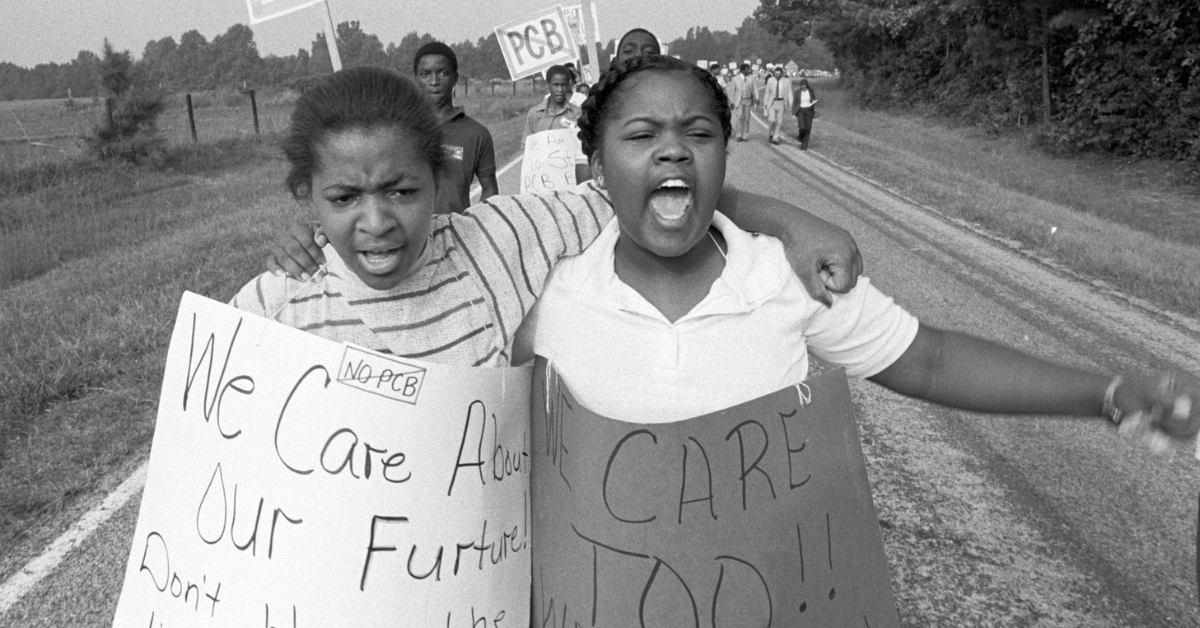
That spirit goes back to the earliest fights that bore the name “environmental racism.” In 1978, a company dumped harmful PCB chemicals along 250 miles of rural North Carolina roadside by dark of night.
When the illegal scheme was discovered, authorities announced a plan to dig up the soil and dump it in Warren County, North Carolina, a 60% Black area. Citizens protested and fought in court for four years. When the trucks did get rolling, they were met with marchers singing civil rights songs and lying down in the road.
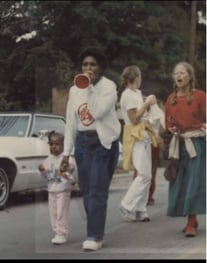 Over seven weeks, police arrested and detained 500 people, including dozens of children. Arrestee Kimberly Burwell, then 10 years old, was also organizing her classmates.
Over seven weeks, police arrested and detained 500 people, including dozens of children. Arrestee Kimberly Burwell, then 10 years old, was also organizing her classmates.
“I headed up my fourth and fifth grade class members and we wrote letters to the governor…we had a Black Monday where none of the kids went to school,” Burwell told interviewers at the UNC Chapel Hill Library in 2022.
Burwell’s mother, Dollie, a civil rights veteran, has been called the mother of the environmental justice movement. As her daughter told UNC, Dollie raised Kimberly in the movement, taking her to marches from the time she was in a stroller. “Most adults want to know the pros and cons of everything before they get involved, and young people just go out there and do,” Kimberly said. “It’s something that our ancestors always taught us, that it’s going to take the young people to continue the struggle.”
Though the Warren County dump went forward, the protests spawned a series of groundbreaking reports–first, a regional report from the GAO in 1983. Then, in 1987, the first national study, Toxic Wastes and Race in the United States, from the United Church of Christ (UCC) Commission for Racial Justice. In 1990 came Robert Bullard’s book Dumping In Dixie.
For the first time data showed that Warren County was no anomaly. In fact, the UCC report found that the presence of Black people in a community was the single strongest predictor of whether a commercial hazardous waste treatment, storage, and disposal facility (TSDFs) would be located there. All over the South and all over the country, toxic polluters were targeting Black, Brown and poor communities.
And increasingly, those communities, especially their children, were forming a movement and fighting back.
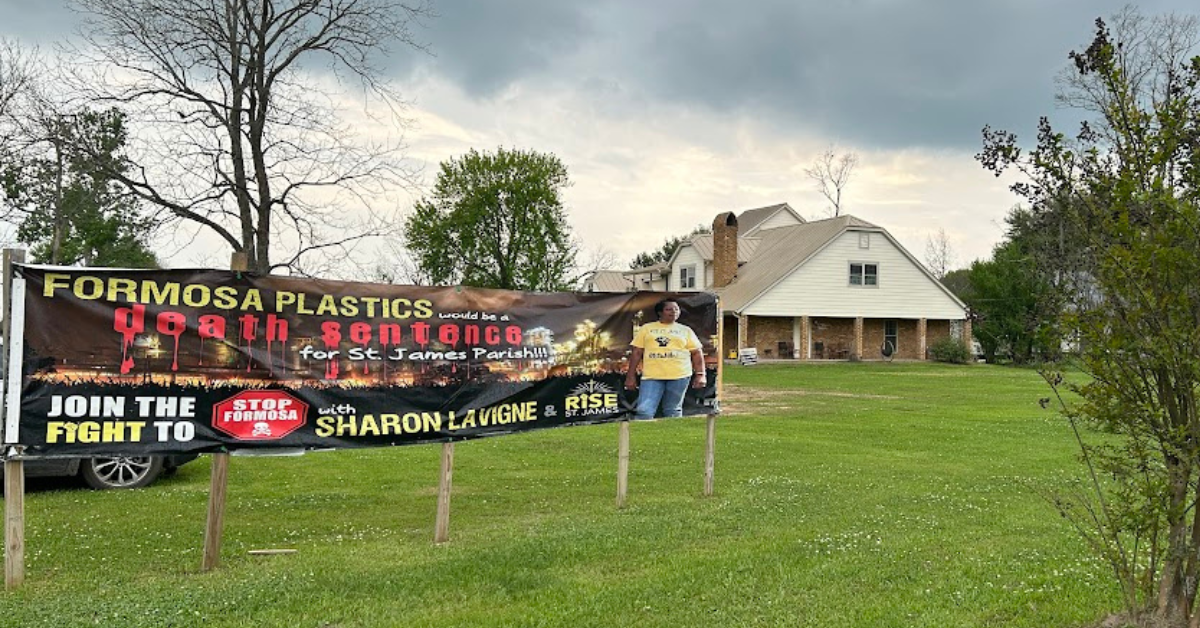
As a child in St. James, Louisiana, Shamyra Levigne thought the lights and plumes of smoke surrounding her home came from Santa’s toy workshop. Despite the rancid smells and flares the factories emitted daily, she didn’t grasp what was really going on until her older sister fell ill from drinking tap water. Only then did Shamyra begin to understand the dangers of the industrial water and air pollution surrounding the Levigne family’s home.
“Growing up, it was just a fact of life,” Shamyra said. “The plants were there before I was even born and no one was really fighting against it. I was in a place of acceptance and a place of ignorance because I wasn’t aware that it wasn’t normal.”
The full extent of Shamyra’s exposure to industrial pollution still didn’t sink in until her college years at Southern University, when her professor lectured about Cancer Alley, an 85-mile stretch between New Orleans and Baton Rouge with reported cancer rates drastically higher than the national average. The entire Cancer Alley region has over 200 petrochemical plants and refineries, emitting carcinogenic air.
The petrochemical-industrial complex in Louisiana is one of the most alarming examples of environmental racism today, with a long and complex history. The region was first given its moniker, “Cancer Alley,” in the 1980s.
In 1987, the state attorney general called the pollution in Cancer Alley "a modern form of barbarism.” Yet over 35 years later, plants continue to emit dangerous chemicals, some close to schools.
For example, Denka Facilities, a Japanese plant that produces chloroprene, a component of synthetic rubber and a likely carcinogen, sits just three blocks from the Fifth Ward Elementary School in Reserve, Louisiana.
Carcinogenic air is hazardous for anyone, but the health risks are compounded in children. A study from Southern California Children’s Health shows that children and teenagers who live in areas with high air pollution rates have an increased risk of lung development issues and weaker function of the organ.
In 2015, Yuhuang Chemical bought St. James High School and surrounding property in 2015 for over $10 million. The purchase ended Sharon Levigne’s career as a special education teacher at the historic high school.
Three years later, she felt led by God to create the faith-based environmental organization RISE St. James. In 2020, Shamyra, now 33, joined her mother in the work.
Together, they and many others are fighting to stop the construction of a $9.4 billion plastics plant in their community. A ProPublica analysis estimated that the proposed plant could double or triple locals’ already-high exposure to cancer-causing chemicals.
“If Formosa is built, we will not be able to live in St. James,” Sharon Lavigne said. The air would be too toxic for us. We already can't breathe the air as I speak, and Formosa would finish us off.”
Rise St. James and allies scored a big win last fall, when Louisiana’s 19th District Judge Trudy M. White vacated the air permits that would have allowed Formosa to build the plant.
But the fight is not over. Formosa and the Louisiana Department of Environmental Quality (LDEQ) have appealed the district court decision. The case now moves to a state appellate court. The stakes are high. “If Formosa is built, we will not be able to live in St. James,” Sharon Lavigne said.
But Sharon and her daughter continue to organize, energized by their faith. “Goliath will fall,” Shamyra said.
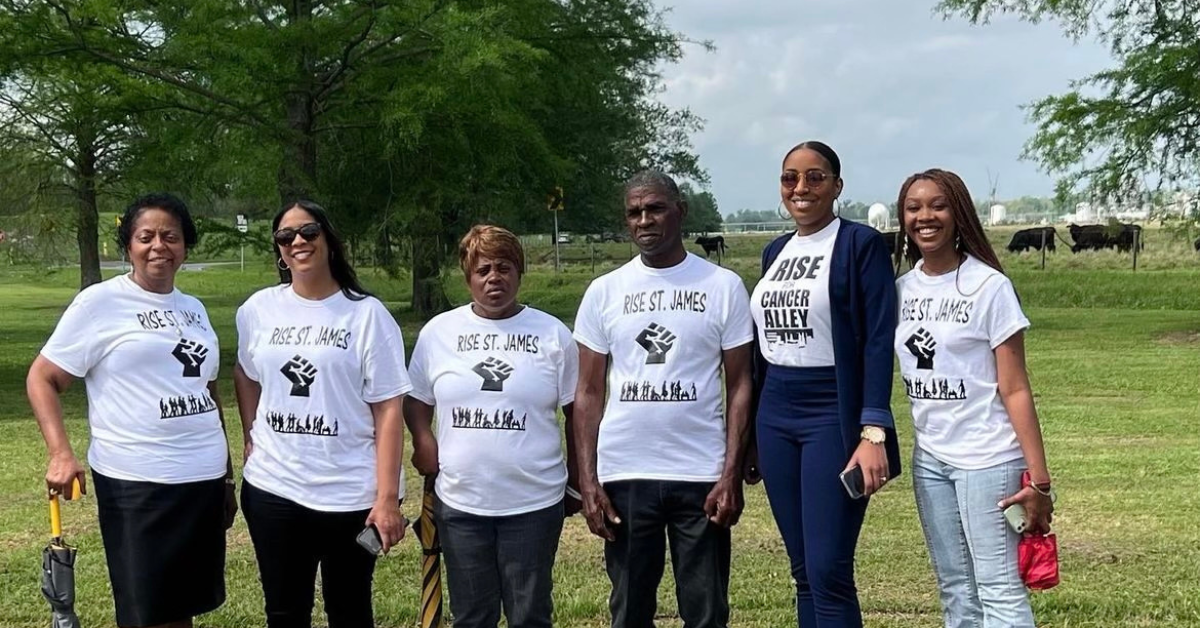
From the South Bronx to Jackson, Mississippi, to cities and industrial zones around the country, environmental injustices continue to capture public attention, particularly when vulnerable children are involved. And in some places, activists have notched wins, like in Harlem in 2014, where the nation’s first LEED-certified ‘green’ bus depot opened after seven years of local organizing.
But until very recently, the public’s view of environmental activism remained dominated by white faces and by the goal of protecting “untouched” wilderness. Much of the public had no idea environmental activism encompassed causes like the rights of Black and Brown children to breathe healthy air and drink clean water.
It’s only now that environmental activism is taking on Black and Brown children’s right to learn in an environment free of toxic pollutants with effects on the brain, from lead in school drinking fountains to neurotoxins in the air surrounding schools set near major highways, like Fannie Lou Hamer.
“We are at a cross section of centering vs. consideration,” said Beau Morton of WE ACT.
In other words, at this moment, will the rights, voices, and leadership of racially marginalized people, whose lives are literally being shortened by environmental hazards, be centered in the movement for change? Or will they merely be considered?
After 40 years of environmental activism for environmental justice, the facts on the ground have hardly budged. As a 2021 review of the evidence found: “Environmental racism in the United States, as measured by the proximity of commercial hazardous waste facilities and other environmental pollutants, continues to increase in spite of decades of environmental justice policy by both state and federal agencies, sustained activism, and a growing public awareness of the problem.” The same pattern holds true with climate change.
At this moment, there is an opportunity to right some historical wrongs. The Biden Administration’s Justice40 is a first-of-its-kind whole-of-government promise that 40% of federal infrastructure and sustainability funding across agencies will go toward communities historically targeted by environmental racism. Billions of dollars are available to make schools, and neighborhoods in frontline communities, more sustainable and resilient.
Last November, the EPA awarded Louisiana’s state environmental department and three other Louisiana organizations $2.4 million in grants with funding from Biden’s American Rescue Plan and the Inflation Reduction Act for air monitoring projects.
The state environmental department will use their $900,000 for an air monitoring station in St. James. The station will monitor particulate matter, sulfur dioxide, total hydrocarbon, methane, non-methane and hydrogen sulfide in addition to collecting wind speed and wind data. The department will also monitor polyaromatic hydrocarbons in the Alexandria-Pineville area.
But student activists are asking for more than these kinds of incremental improvements. They want a broader transformation, starting with education. They want schools to be places where climate justice is both taught in theory and put into practice.
“We’ve got to recognize there’s a lot of schools not being taught what we’re learning,” said 16-year-old Brandon Gonzales, one of Yancey Sanes’ students at Fannie Lou Hamer High School in the Bronx. “As people of color we’re mostly impacted by these changes. We have to deal with racism. How can we get justice and be equal? And then make the world a better place and sustainable for all of us, not just people in power.”
Take Action: To partner with Sustainable and Just Future and bring youth-centered environmental education to more schools and communities, fill out this form.
Banner Photos by Anya Kamenetz; Photo 2 (BW) courtesy of Jerome Friar Photographic Collection and Related Materials (P0090), North Carolina Collection Photographic Archives, The Wilson Library, University of North Carolina at Chapel Hill; Photo 3 courtesy of Wayne Moseley; Photos 4&5 courtesy of RISE St. James.
Anya Kamenetz is an education journalist, author, speaker, and climate advocate formerly of NPR, who now serves as a senior advisor to the Aspen Institute's This Is Planet Ed initiative. Sierra Lyons is a Florida-based freelance journalist covering race, politics, education, and Christianity. Her work has been featured in The Washington Post, New York Magazine, and the Huffington Post.
Few issues in education spark more tension and debate than standardized testing. Are they a tool for equity or a burden on students? A necessary check on school systems or a flawed measure of...
Charter schools are public schools with a purpose. Operating independently from traditional school districts, they're tuition-free, open to all students, and publicly funded—but with more flexibility...
Despite the benefits of a diverse teaching force, prospective teachers of color fall out of our leaky preparation pipeline at every stage: preparation, hiring, induction, and retention. Here’s what...
Ed Post is the flagship website platform of brightbeam, a 501(c3) network of education activists and influencers demanding a better education and a brighter future for every child.
© 2020-2025 brightbeam. All rights reserved.
Leave a Comment